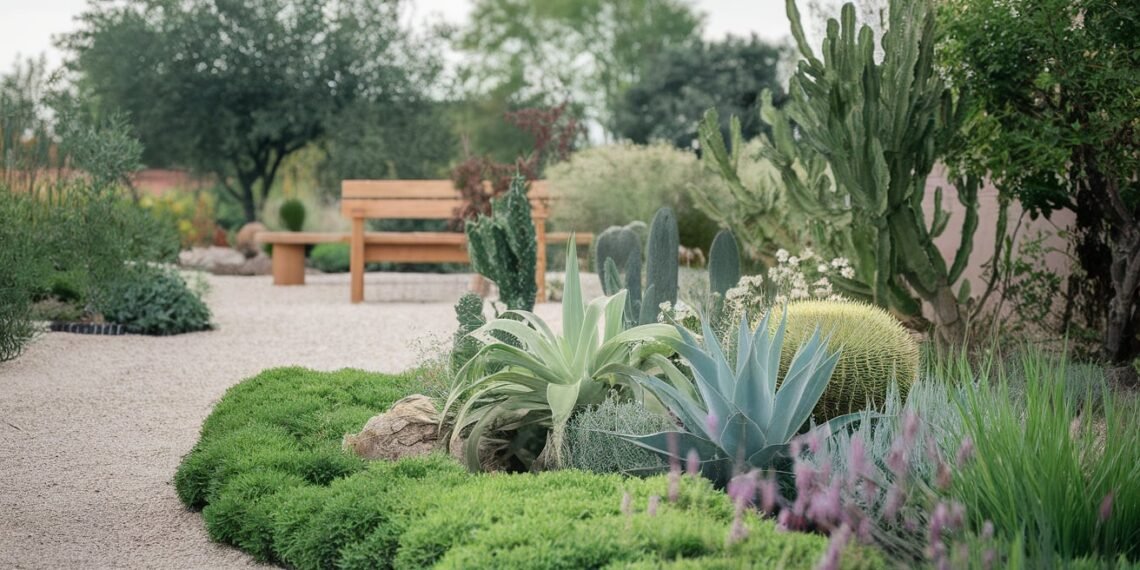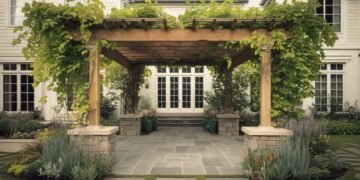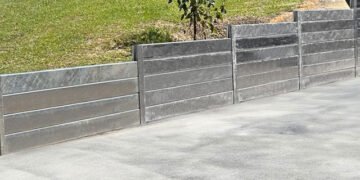We all lead busy lives, but slowing down sometimes pays off. It prevents burnout, above all else, and allows us to recharge our batteries. Nothing does help with that quite like a thoughtfully designed garden.
The best part is that if you take some time and put some thought into it, you can design the perfect low-maintenance retreat from your busy routine.
The key is to select plants and features that don’t ask for much, but still look beautiful. Yes, such low-maintenance greens and items exist. We’ve gathered the best ideas in this guide. With them, you’ll effectively transform your outdoor space into a serene and manageable oasis.
Assess Space and Needs
Begin by examining your garden area. Record its measurements to identify its potential uses. Observe the existing features, such as trees and pathways, as they will impact your planting layout.
Consider your available time for gardening. When time is tight, opting for low-maintenance plants is a game-changer.
Start by listing the plants you love, along with the features you want to see in your garden.
This quick exercise makes decision-making easier and guarantees your garden suits your lifestyle, rather than adding to your to-do list.
Visualise your desired green layout. Ensure you understand where the sunlight hits and where shade prevails, allowing you to select suitable plants.
Attaching images of your space can aid your process, generating a clearer concept of its future layout. Conducting thorough planning in advance will facilitate a low-fuss, attractive creation where you can relax and unwind.
Allocating time for arrangement simplifies future maintenance. This way, your plot aligns with your personal preferences and avoids consuming your every waking moment.
Doing this from the outset yields a neat, low-maintenance space where you can truly retreat and relish.
Choose the Right Plants
Sounds simple enough. But if you opt for species native to your area, you’ll have much less maintenance to worry about. After all, these plants have adapted to this specific climate for thousands of years, and that’s exactly what makes them great choices.
For the UK in particular, consider using English lavender or British bluebells. They are well adapted to the climate and require minimal watering and maintenance.
Hardy native plants return year after year, cutting down on maintenance and leaving you with more time to relax.
Placing plants with similar sunlight and water needs together keeps the task at hand simple. For an even easier approach, try low-growing groundcovers like creeping thyme or sedum. They spread quickly, filling gaps while keeping everything looking polished with almost no effort.
Beyond practicality, these ground covers act as a rich green canvas, making taller plants stand out. The contrast creates depth and balance, elevating the entire space.
To keep things visually dynamic, mix plants with different blooming periods. Early spring flowers, summer perennials, and autumn foliage create an ever-changing display with little upkeep required.
Create a Simple Layout
Keeping your layout straightforward makes ongoing care much easier.
Try arranging planting areas in neat squares or circles. This not only looks polished but also streamlines maintenance.
Leave enough space between plants. This will improve airflow and promote their strong growth.
For pathways, go for sturdy materials like stone and brick. These materials last long so you wouldn’t have to worry about their maintenance for a long time.
Add a touch of individuality with well-placed trees or an eye-catching sculpture. Small details make a garden feel uniquely yours.
Incorporate Hardscaping
Hardscaping transforms gardening into a low-effort affair, blending functionality with style.
Elements like patios, gravel zones, and stone walkways provide texture and depth, while slashing the time spent on weeding.
Raised beds go beyond convenience, offering better drainage and making planting feel effortless.
Adding decorative stones or ground cover does more than enhance aesthetics. These elements lock in moisture and keep uninvited plants from taking over.
Setting this up takes some effort and planning, but the benefits in the long run make it worth it. Once the design settles in, it requires much less maintenance than traditional gardening.
For those after a stylish, low-maintenance outdoor space, hardscaping is a smart design choice. Adding structural elements turns outdoor areas into neat, attractive spaces.
Install a Drip Irrigation System
Drip irrigation will work for your garden to make it thrive with minimum stress. Water is channelled right to the roots, promoting better water usage and healthier plants.
Automating your watering schedule takes the guesswork out of garden care. It saves time, keeps plants happy, and makes gardening less of a chore.
For the best results, group plants with similar hydration needs. The drip irrigation system will then work at maximum efficiency, because not a single drop of water will be wasted.
Additionally, add mulch around the plants. This allows you to water your plants less frequently whilst preserving a lush look.
Collecting rainwater in barrels is a highly effective, eco-friendly technique. It significantly decreases city water usage. That subsequently reduces your bills significantly.
Use these simple tips to ease your gardening chores. If you’re busy, consult a seasonal gardening service to help you out with this.
Use Mulch and Ground Covers
Mulch and ground covers are secret weapons for a thriving garden. A generous layer of organic mulch, such as wood shavings, straw, or compost, locks in moisture and reduces the need for frequent watering.
Mulching does more than hydrate the soil. It suppresses weeds, meaning less time spent yanking out unwanted growth. If a polished look is the goal, decorative pebbles or aggregates offer a stylish, low-maintenance alternative.
Ground covers elevate your garden game. Creeping thyme and sedum sprawl across bare patches, transforming them into dense, vibrant greenery. They suppress weeds without demanding constant upkeep.
These fast growers weave a living tapestry, soft underfoot and effortlessly complementing surrounding plants.
Texture and colour play a key role. Mulch brings warmth, while vibrant ground covers introduce contrast, making the garden feel dynamic. The result is a balanced, eye-catching space that looks fantastic with minimal effort.
Plan for Seasonal Changes
Designing a garden means thinking ahead, not just for today but for every season. A well-planned space stays vibrant, shifting with the rhythm of the year.
Mixing plants with staggered bloom times keeps things interesting. Early blossoms in spring, rich foliage in autumn, and evergreens holding steady through winter create a landscape that never looks dull.
Routine care, like pruning, is best tackled during quieter months. Staying on top of it prevents overwhelming tasks later. With a little foresight, your garden remains a source of beauty and calm, no matter what the calendar says.
Conclusion
The simple way to create an easy-going garden that looks great is to follow the steps described above. Consider your needs first. That determines which are the right plants and materials. Select plants that will thrive in your area, so they will be hardy and easy to maintain.
Try some cool designs with shapes and stones to cut down on work. Use smart watering systems and choose your plants wisely to keep things simple.
This way, your outdoor space stays vibrant, your workload shrinks, and you get to savour the calm of a garden that practically looks after itself.
















